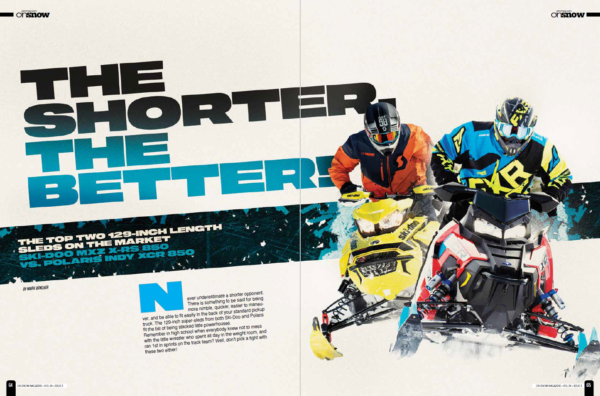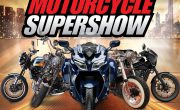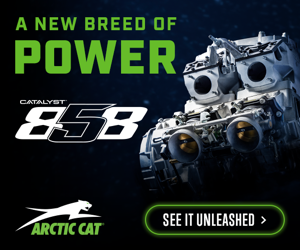By Mark Boncher
Never underestimate a shorter opponent.
There is something to be said for being more nimble, quicker, easier to maneuver, and be able to fit easily in the back of your standard pickup truck. The 129-inch super-sleds from both Ski-Doo and Polaris fit the bill of being stacked little powerhouses.
Remember in high school when everybody knew not to mess with the little wrestler who spent all day in the weight room, and ran 1st in sprints on the track team? Well, don’t pick a fight with these two either!
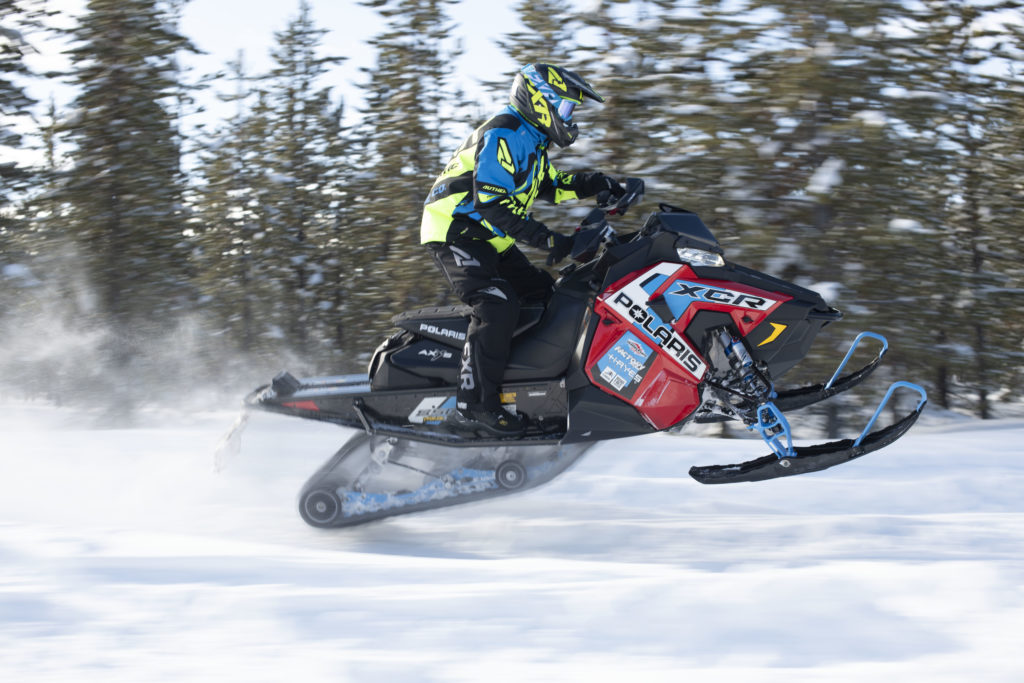
XCR is pure trail goodness
We’ve talked plenty about the longer 137-inch Polaris Switchback XCR, but the Indy XCR 850 is really where it’s at for traditional aggressive trail riders. This was a SnowCheck spring pre-order program sled, but we were lucky enough to toss a boot over this one for several days when it was first introduced. Man, this thing is a hoot!
The shorter track and standard tunnel on this Polaris was exactly what many Polaris enthusiasts had been calling for. The Rush suspension originally turned some folks off, simply by its nontraditional look, but certainly not for its performance. Still, the naked rear end was just too much for a certain group of trail riders. The Indy XCR put any last inkling of doubt, clear out of the minds of the naysayers. The Pro CC rear suspension, with coil-over Walker Evans Velocity 2 hi-low compression adjustable rear shock, and 2.0-inch diameter hi-low compression adjustable front shock, gives any aggressive trail rider a wide range of options. You can soften it up easily for additional transfer and hookup, or make it MUCH stiffer in calibration for tackling even the biggest moguls and jumps. Plus, there’s a full 16.2-inch of rear suspension travel.
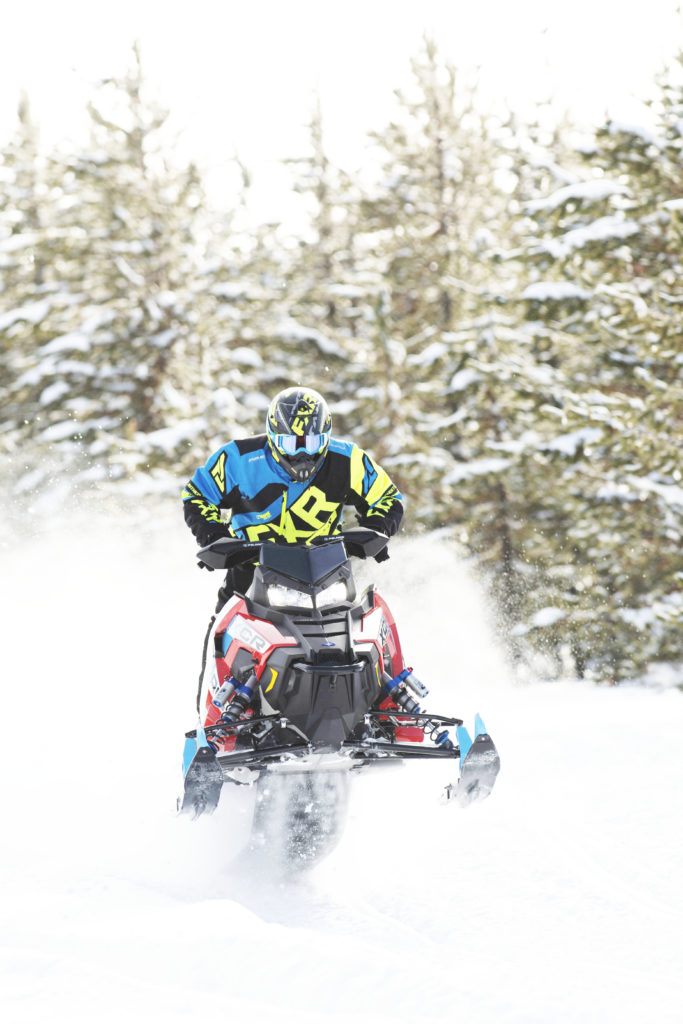
The 850 Patriot motor makes the XCR one of the fastest 2-stroke sleds on the market.
The Indy chassis is the lightest trail chassis on the market too. At a dry weight of just 468 pounds, this is one that you can toss around, it’s an extension of yourself. The AXYS front end has the upgraded WE Velocity 2-inch diameter shocks as well, with hi-lo compression adjustment. The combination AXYS front end and Pro CC rear suspension work extremely well together, and this is my personal favorite trail sled that Polaris has put out in recent history. The only other Polaris sled that rivals it in the trail is the Switchback XCR, but the Indy is better in the tight twisties, and flies like a spitfire off any drift-jump you can find.
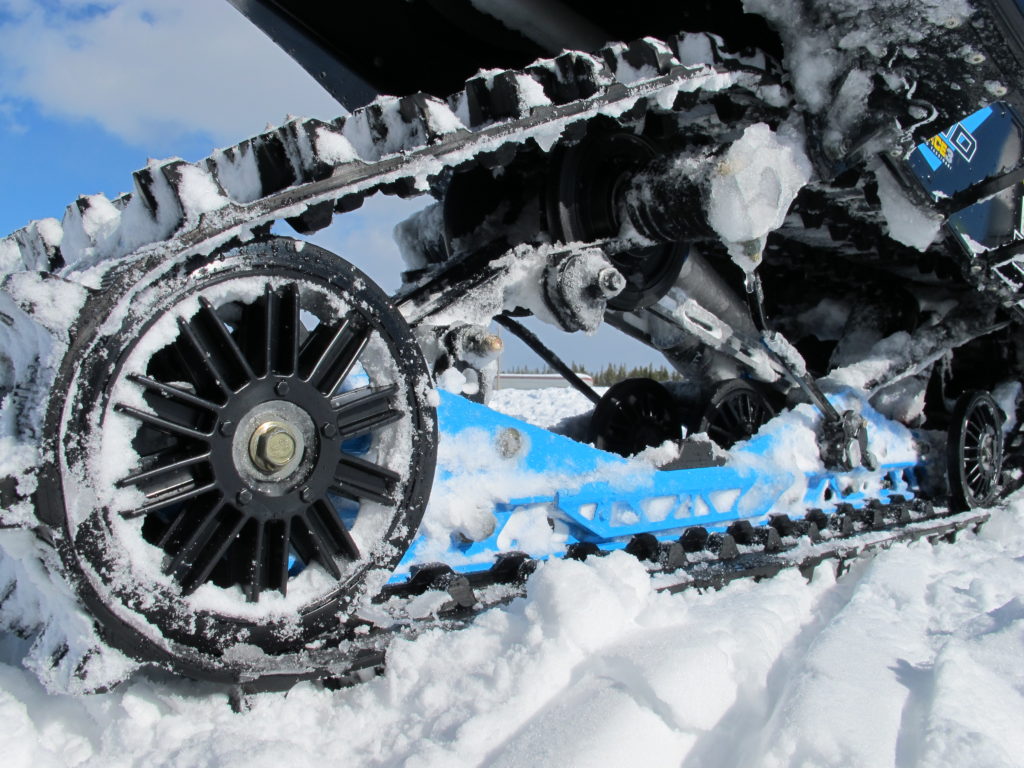
Our personal favorite track for the XCR is the 1.35 lug Cobra, but also appreciate the smaller 1.25 and larger 1.75 inch tracks.
The Pro-Steer skis are some of the best trail skis in the industry as well, and turn on a dime. They can be a little loud in low-snow chatter, but we are more concerned about performance, and taking 90-degree corners are no problem. Since this was a SnowCheck sled, it came with the option of a 1.25-inch lug Ice-Ripper XT track, 1.35 Cobra, or 1.75 Backcountry. We would take the 1.35 Cobra every time, and run just a standard trail-studding pattern of 2-per-lug down the center. With new 6-inch carbides, that’s when you really see this sled become the all-around, incredible sled that it is.
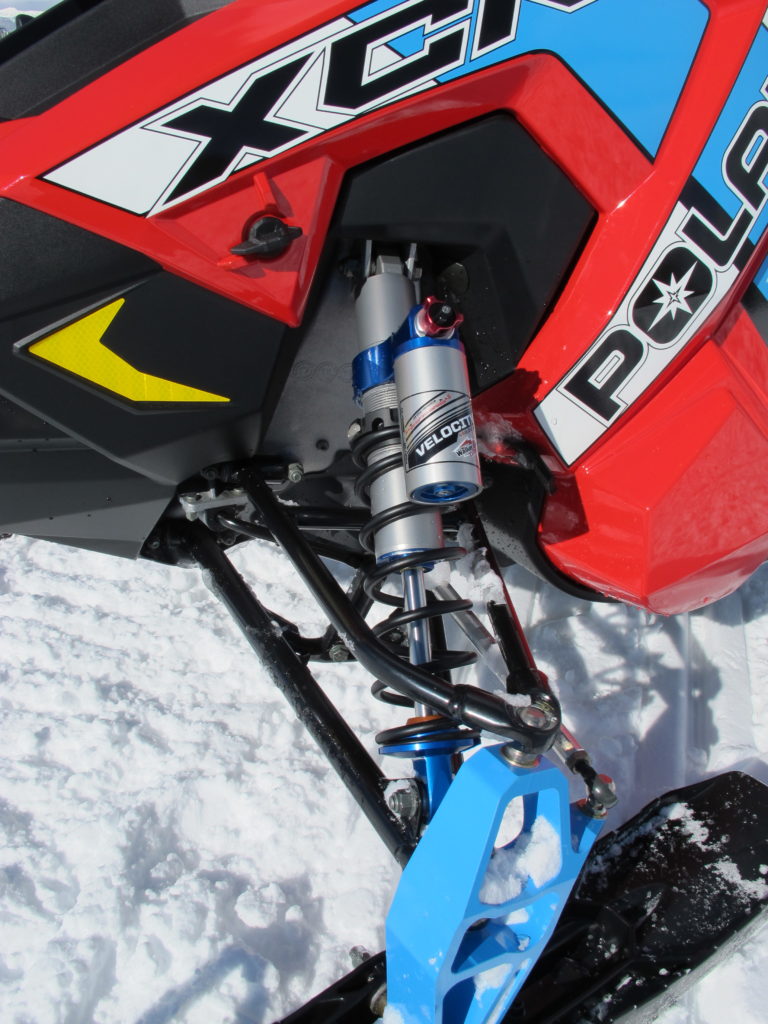
Suspension courtesy of Walker Evans Velocity Shocks up front on the Polaris mogul-masher!
We would take off the low, smoked out windshield, and replace it with a medium-height one, but other than that, there isn’t much we would change ergonomically with this sled. It’s got the race-edition radial brake too, so it stops when you really need it to.
One more thing, the liquid twin Patriot 850 motor is crazy-fun in this little sled! If you are strictly looking at power-to-weight ratio, this is the best trail-sled out there.
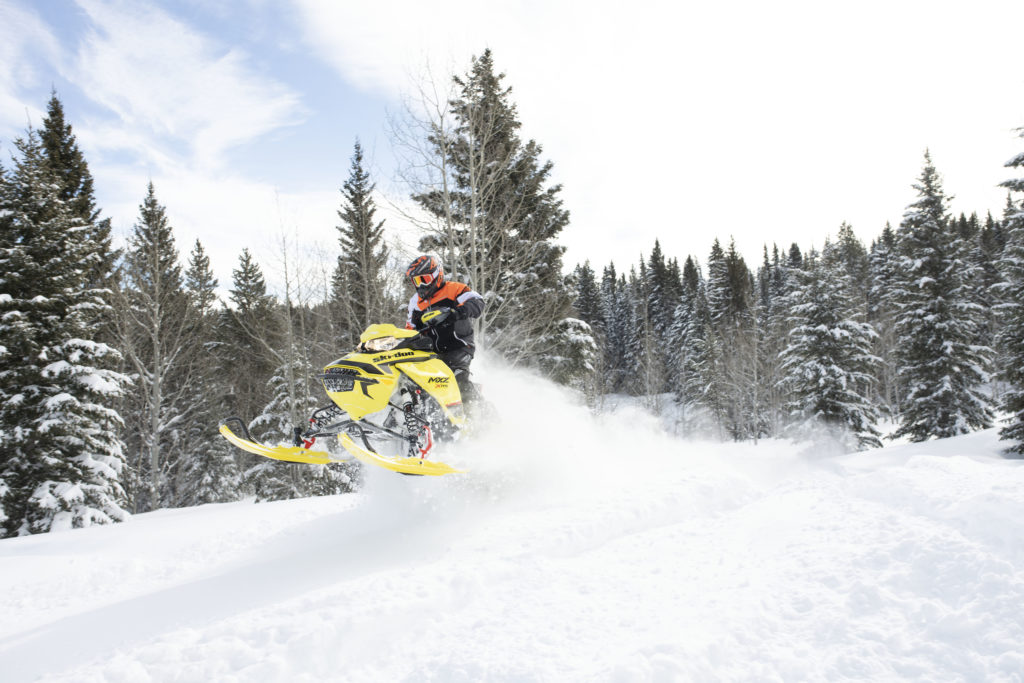
MXZ X-RS will make you giddy
There are very few sleds on the market that just make you tingle down to your toes with 3rd grade giddiness, like the 129-inch MXZ X-RS 850. The 849cc E-Tec direct injection twin liquid is enough to do it on its own, but do yourself a favor, and find a dealer or friend who has one and ride it. Put it through a two-mile mogul field, then carve up some slim corners, and if you aren’t impressed, then you are doing it all wrong.
Honestly, the Gen4 platform wasn’t necessarily hyped up for this 129-inch sled, but it is one of the best examples of a place that it works extremely well. Not much is newer for 2020 on the MXZ X-RS, but it does get the 7.2-inch wide digital display, and you can get it without the TS adjustable skis up front. We liked the idea of the TS skis with the blade-type carbide that can easily be adjusted up and down with a couple quick turns on the cam. However, a lot of purists would rather have the standard Pilot 5.7 skis. Me personally, I would rather have the standard skis that give more options for carbide length, save some weight on the front end, and work extremely well.

The MXZ X-RS is one of the most capable trail sleds ever built and the most flickable.
Like previous years, the RAS 3 front suspension with KYB Pro 36R shocks soaks up bumps easily, and has a wider range of adjustability for more riders than what it is marketed as. While this is truly a race-sled in trail-clothing, the rMotion rear suspension still keeps us impressed as both a race-ready skid, and a trail tamer. With KYB Pro 40 shocks, and available ‘easy-adjust’ system which mounts on the running boards, you can more easily dial in your ride for any condition than any other trail sled.
The pDrive primary clutch on the 850 has the clickers as well, which we appreciate, because you can quickly change them, even on the trail. The 600 version does not have these, but both have the QRS secondary clutch. This is one of the most forgiving transmission systems in snowmobiling. Just about anyone can ride this sled predictably, and much of that comes from the smooth clutching.
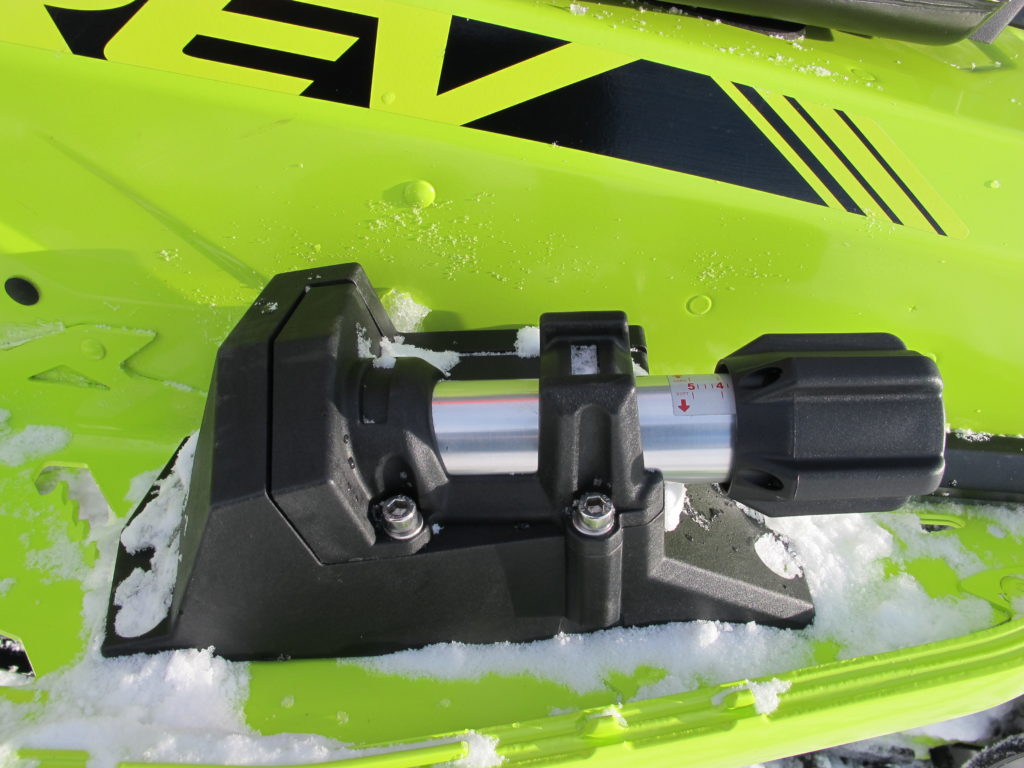
The quick-adjust on the boards of the X-R allows you to change both pre-loaded and shock compression with just a few turns on either side.
With the option of two track on this sled, you could get either the 1.25-inch Ripsaw, or 1.5-inch Ice-Ripper. We’ve tested both, and the 1.5-inch lug was really a great, aggressive option. Unfortunately, the small studs that are on the ends of the lugs of the Ice-Ripper aren’t enough traction for a lot of the aggressive riders who gravitate towards this machine. Since it really is a trail sled, we would probably opt for the 1.25-inch, and put studs in it.
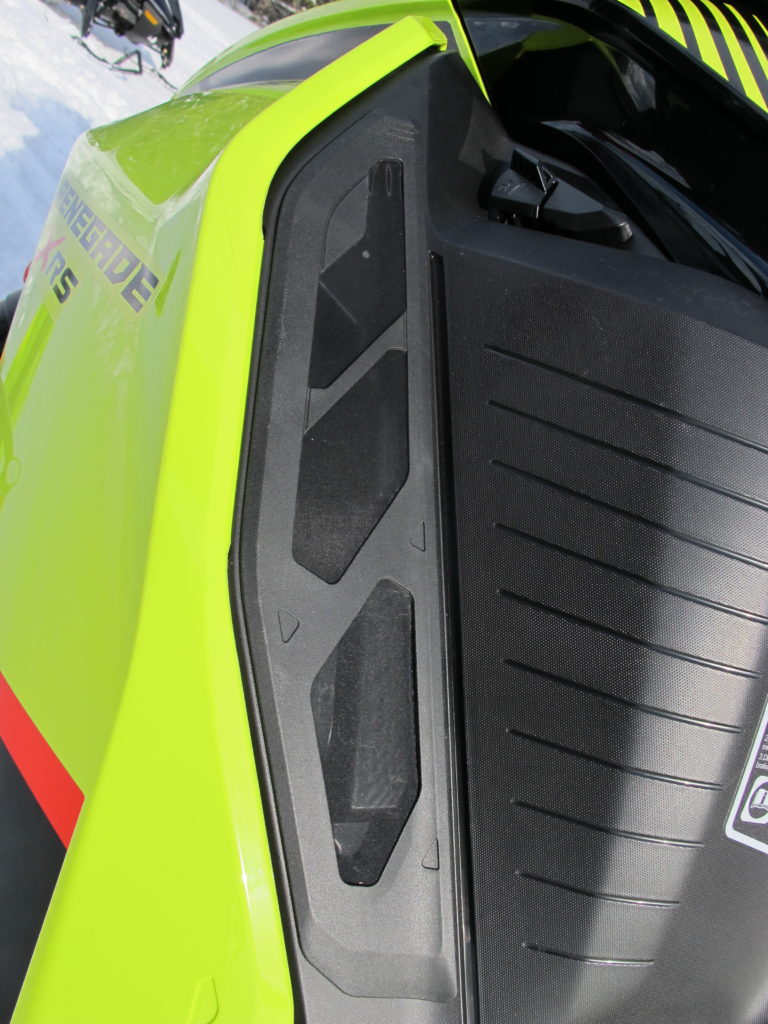
With new venting the 850 and its clutches get plenty of airflow to stay cool and run at optimal temps.
Two other great features of the X-RS are the FAR adjustable riser, with 4-inches of forward/backward adjustment, without tools. A lot of people are ‘set-it and forget-it’ riders, but it is still nice to have the option. The second unheralded feature we appreciate are the RS running boards. They allow flatter foot placement for stand-up riding and jumps, and they’re reinforced. Plus, snow evacuation is great!
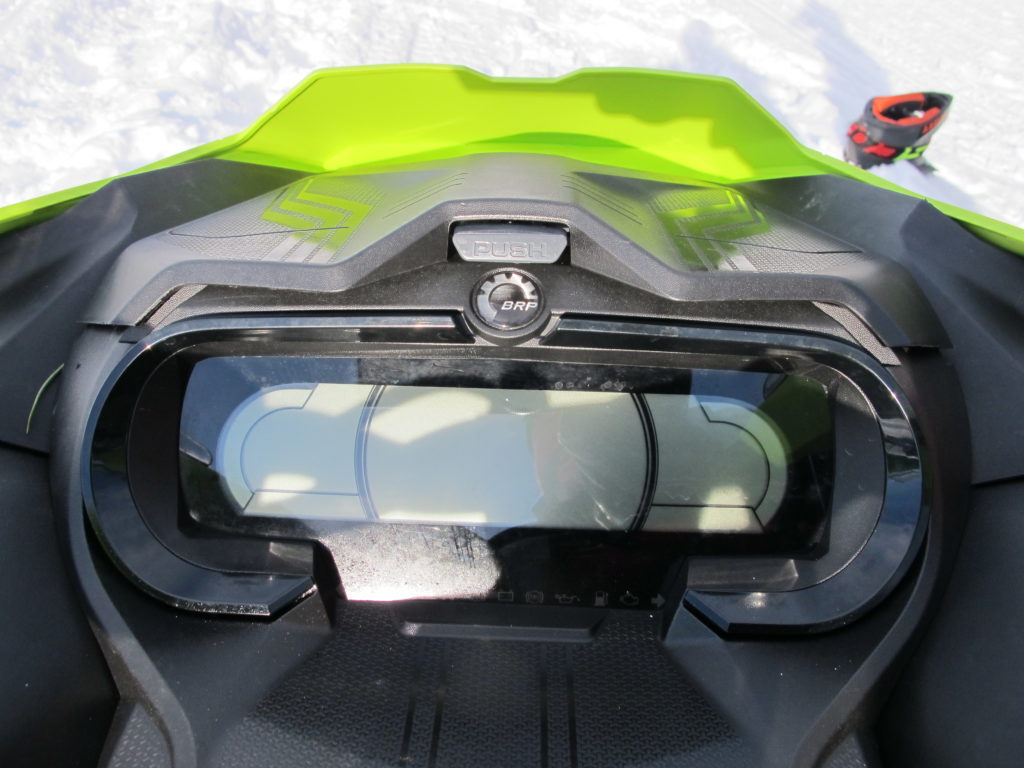
A big 7.2 inch wide digital display allows pilots to see exactly what is going on,and easily adjust to view what they want on the readout.
Which One-twenty-nine?
This one is really tough. For the money, the Polaris is a great deal, and the newer of the two machines. However, the X-RS is tried and true, and an all-around smoother ride that is quickly varied to be darn near perfect in more conditions. If I were going strictly on looks, I would take the Ski-Doo as well. But hey, we’re all not that superficial are we?
Yamaha Sidewinder SRX LE
The true hyper sled!
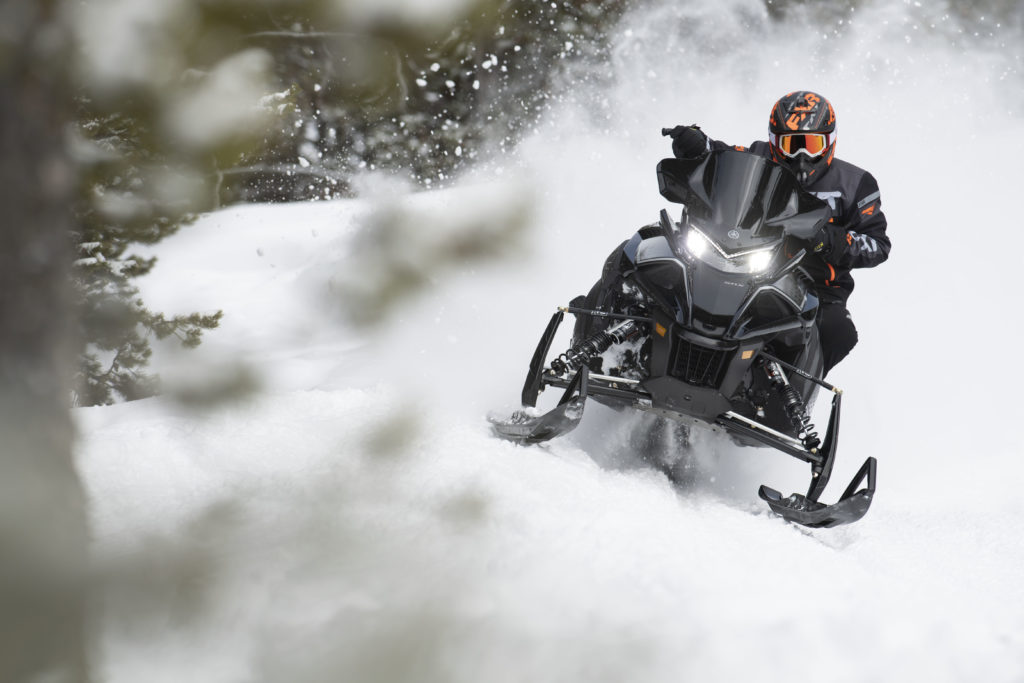
It’s not a 129, but no article on the top trail sleds in the industry is complete without talking about the SRX. This sled is truly the baddest, most jaw-dropping machine in snowmobiling. I am pretty sure NASA could strap a couple of these Yamahas to their rockets, and get more power. Ok, that’s a little much, but it certainly feels like you are at least breaking the sound barrier when you pull the throttle on this 200+ hp turbo 4-stroke, fuel-injected triple!
In all midnight black and silver, the SRX looks the part of a mean trail monster. 998cc of ultra-Yamaha motor engineering is placed low in the chassis, and that power is harnessed by the YSRC clutching system. Staying low is imperative to speed, and the Fox 1.5 Zero shocks up front, paired with the same Zero shocks with 2-inch diameter in the rear, keep the sled soaking up the chatter. This sled has the iQS (Intelligent Quick Shift) suspension system, which allowed the shock’s compression damping to be electronically adjusted on the fly, through a mounted toggle on the bars. Go from soft to medium, to hard settings quickly, for ultimate performance.
The front coil-over shocks have dual-rate springs on them, and there’s low, pre-load torsion springs in the coupled rear suspension, so the sled actually sits lower, but does not give up much on suspension performance. This is crucial because a big sled like the Sidewinder needs to stay low to be fast and negotiate the corners by staying flat, so you can ride aggressively and in control.
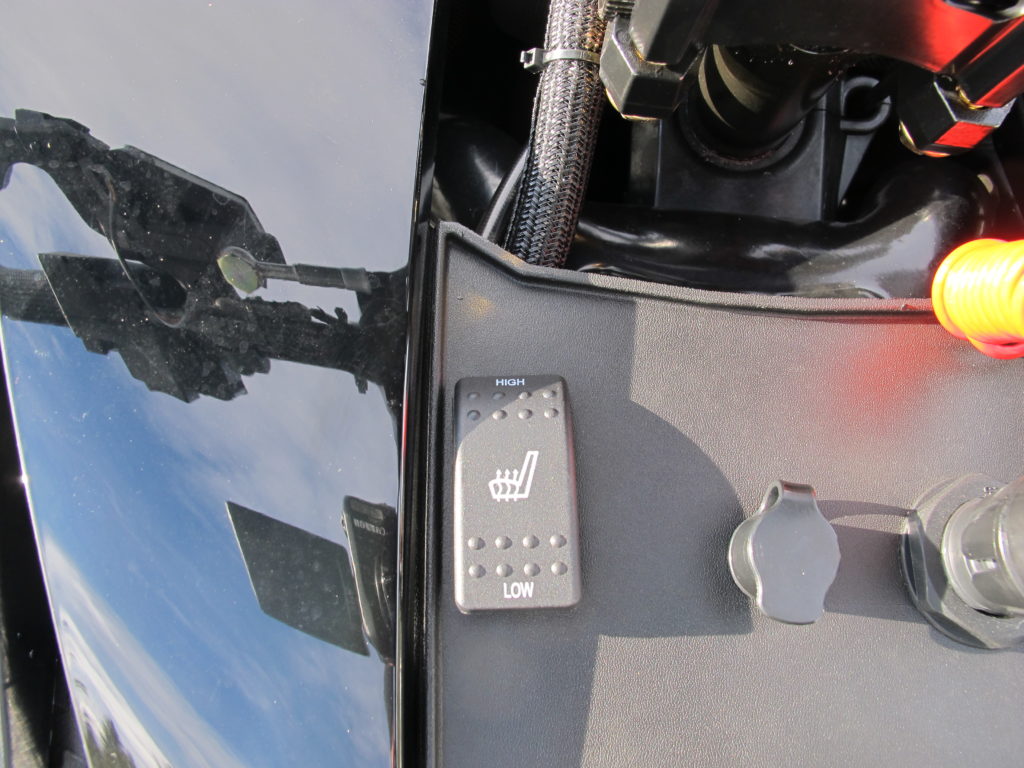
If you have ever ridden with a heated seat, you will miss it when you don’t have it.
The 4-stroke technology Yamaha has put into this newest motor includes triple throttle bodies and more. The EBRS engine braking system is great for riders as well. Without getting into the technical jargon, what the rider feels is less negative intake pressure during deceleration… it’s smoother when you let off the throttle. The system works with idle speed control, the ECU map, and RPM data to control it. The triple throttle-bodies are positioned close to the intake valves, and if you have ever ridden a Sidewinder, you know that the turbo lag is almost non-existent. Even when you get off the throttle and back onto it, the reaction from this sled is extremely quick. That’s something not often talked about, but a big reason why this sled is different than turbos of the past.
Keeping with the speed-theme, the SRX uses a 137-inch track with 1-inch lugs on it. Usually, a sled of this power comes with larger lugs, but if you are looking for speed, smaller lugs are important. Negotiating corners, keeping friction and wind-resistance down, as well as sustaining track integrity at high speeds are all factors that went into the decision to use this track.
A few more little tid-bits we like about this sled include push-button electric start, a heated seat, and tunnel flares. The electric start on Yamahas were a key-system for the longest time, and the push-button is much easier to use with gloves on, and is faster. The SRX is also a chassis shared with Arctic Cat, and when this chassis first came out, you would often get chunks of snow that would come up and either hit you, or pass you by, especially in hard-acceleration events. The flares stop this from happening and minimize the resistance. The heated seat is just great, no matter what kind of rider you are.
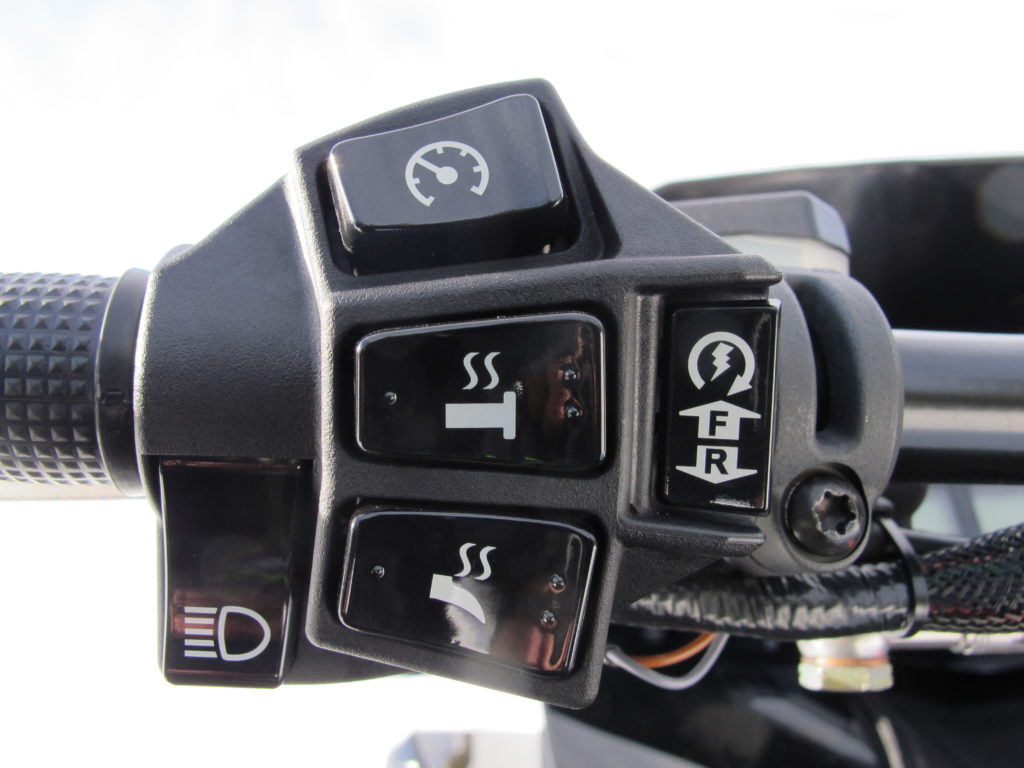
Adjusting the suspension firmness, bar heaters, lights and gauge is easily done from the control block on this new Yamaha.
The price tag is lofty at over $17k, but if you are a guy/gal that just has to have the fastest sled on the lake or trail, that just happens to be one of the smoothest and coolest, then don’t be afraid to make the payments!




